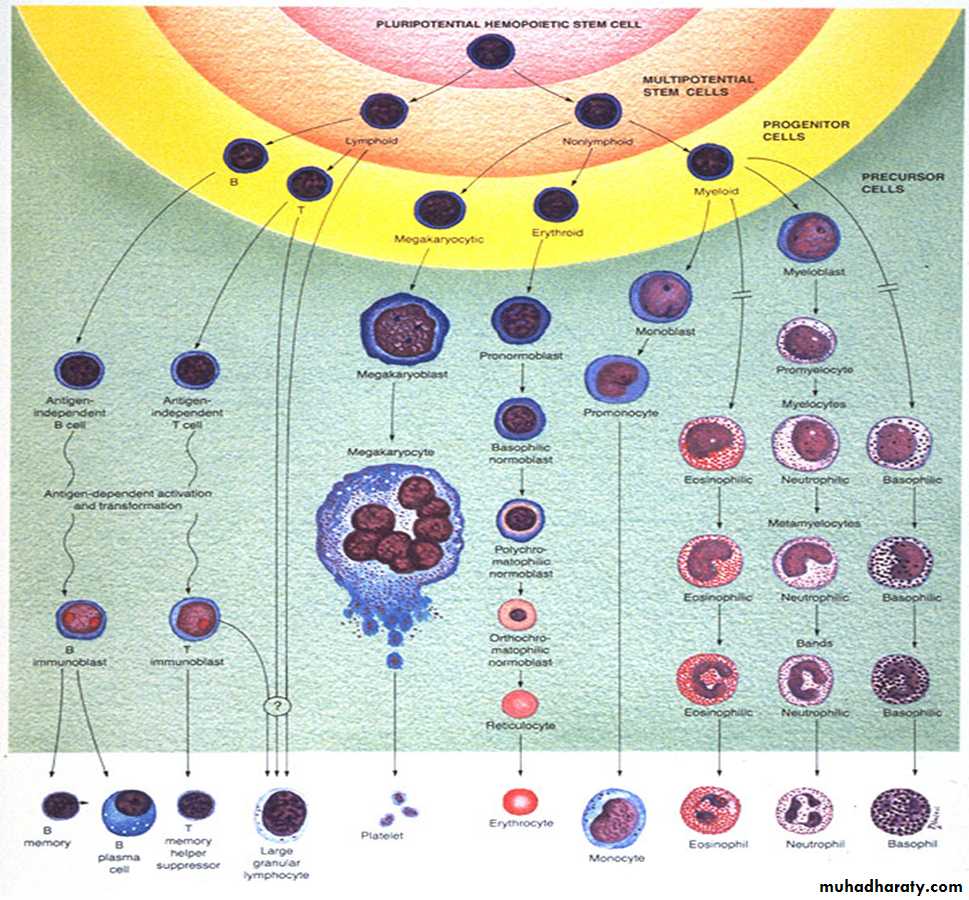APLASTIC ANAEMIA
Primary idiopathic acquired aplastic anaemia:The basic problem is failure of the pluripotent stem cells, producing hypoplasia of the bone marrow with a pancytopenia in the blood.
The diagnosis rests on exclusion of other causes of secondary aplastic anaemia and rare congenital causes, such as Fanconi’s anaemia. IAPLASTIC
Clinical features and investigations
symptoms of bone marrow failure,1.Anaemia
2.Bleeding
3. Infection
Complete Blood Count(CBC) :
Pancytopenia.
Reticulocytopenia.
Bone marrow aspiration and biopsy reveal hypocellular marrow.
Treatment
1.The curative treatment for patients under 30 years of age with severe idiopathic aplastic anaemia is allogeneic Hematopoietic Stem Cell Trasplantation (HSCT) if there is an available donor.
2. In older patients, immunosuppressive therapy
with ciclosporin and antithymocyte globulin.Such patients may relapse or other clonal disorders of haematopoiesis may evolve, such as paroxysmal nocturnal haemoglobinuria, myelodysplastic syndrome and acute myeloid leukaemia
Causes of secondary aplastic anaemia
• DrugsCytotoxic drugs
Antibiotics – chloramphenicol, sulphonamides
Antirheumatic agents – penicillamine, gold,
phenylbutazone, indometacin
Antithyroid drugs
Anticonvulsants
Immunosuppressants – azathioprine
• Chemicals
Benzene toluene solvent misuse – glue-sniffing
Insecticides – chlorinated hydrocarbons (DDT),
organophosphates and carbamates
• Radiation
• Viral hepatitis
• Pregnancy
• Paroxysmal nocturnal haemoglobinuria

